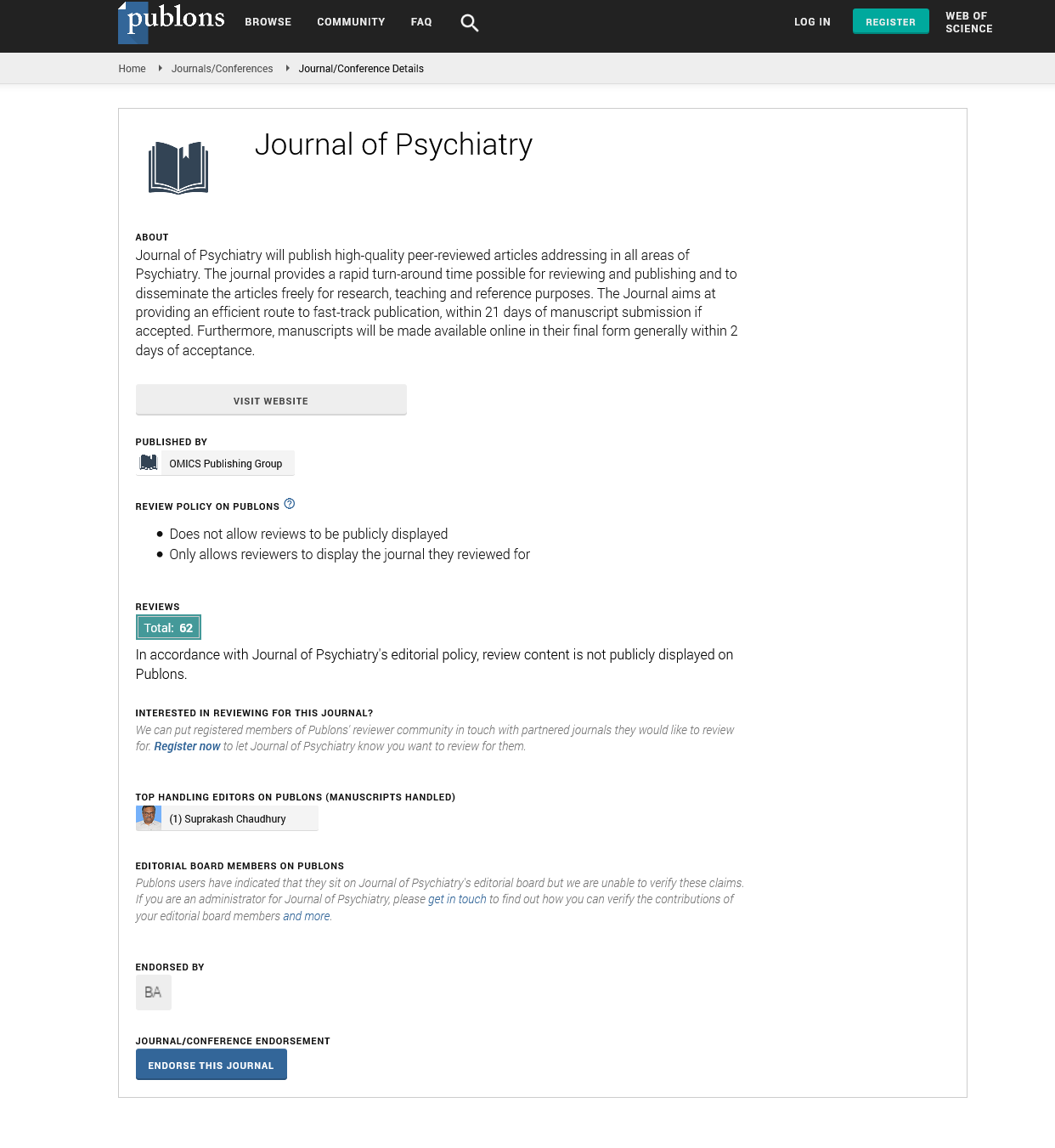PMC/PubMed Indexed Articles
Indexed In
- RefSeek
- Hamdard University
- EBSCO A-Z
- OCLC- WorldCat
- SWB online catalog
- Publons
- International committee of medical journals editors (ICMJE)
- Geneva Foundation for Medical Education and Research
Useful Links
Share This Page
Open Access Journals
- Agri and Aquaculture
- Biochemistry
- Bioinformatics & Systems Biology
- Business & Management
- Chemistry
- Clinical Sciences
- Engineering
- Food & Nutrition
- General Science
- Genetics & Molecular Biology
- Immunology & Microbiology
- Medical Sciences
- Neuroscience & Psychology
- Nursing & Health Care
- Pharmaceutical Sciences
Long-term antipsychotic use and brain volume changes in Schizophrenia: The Northern Finland birth cohort 1966 study
Euro Global Summit and Medicare Expo on Psychiatry
July 20-22, 2015 Barcelona, Spain
Sanna Huhtaniska 1,2, Tuomas Heikka1, Erika Jaaskelainen1, 2, 3, 4, Jani Moilanen1, 2, Tanja Nordstrom2, Jussi Tohka5, Jose V Manjon6, Lassi Bjornholm1, 2, Juha Veijola1, 2, 3, Matti Isohanni1, 3, Vesa Kiviniemi7, Graham Murray8, 9 and Jouko Miettunen1, 2, 3, 4
Posters-Accepted Abstracts: J Psychiatry
Abstract:
Antipsychotic medication may have a role in structural brain changes found in schizophrenia. Most imaging studies are made in the early phase of the illness, mostly during the first episode, when the possible medication effects may not yet be noticeable. Our aim was to analyze whether lifetime antipsychotic use would have an effect on brain structural changes during a 9-year follow-up in a population based sample of schizophrenia cases with illness duration on average 10.4 years at baseline. Our focus was on total gray matter and subcortical structures. Data of 32 individuals with schizophrenia from the Northern Finland Birth Cohort 1966 were collected by interview and from medical records. Lifetime exposure to antipsychotic medication was estimated with dose years. Structural MRI data at ages of 34 and 43 were acquired on 1.5 GE Signa scanner and brain structures were extracted using volBrain automated volumetry system. The data were analyzed with linear regression with intracranial volume as a covariate. Higher lifetime antipsychotic dose associated with increase in both right and left lateral ventricles (standardized beta, b=0.45, p=0.006; and b=0.43, p=0.010; respectively) and with decrease in left caudate (b=-0.38, p=0.023), right accumbens (b=-0.38, p=0.036), and total gray matter (b=-0.38, p=0.035). This is one of the first studies being able to study schizophrenia cases with approximately 20 years of medication history and its effects on brain structure. We found that even after ten years of illness onset it is possible to detect structural brain changes that antipsychotic medication may contribute to.

